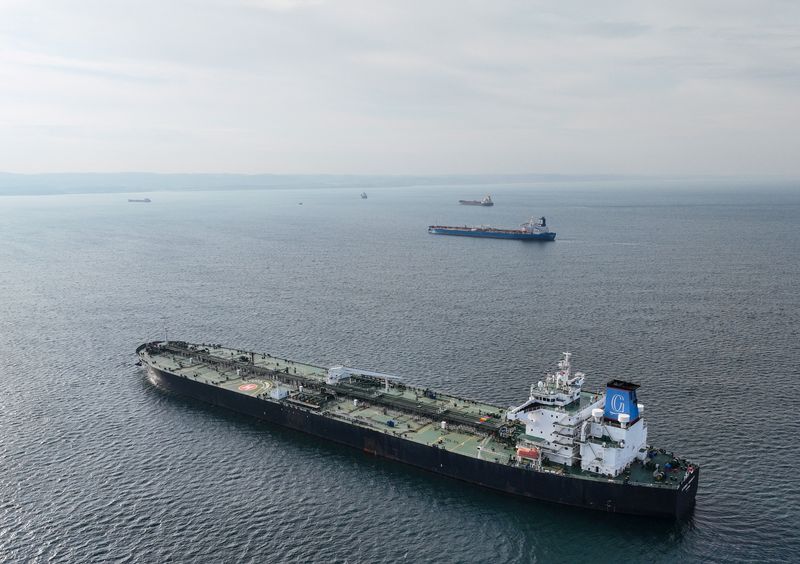By Georgina McCartney
HOUSTON (Reuters) -Global oil benchmark futures settled at their lowest level since December 2021 on Tuesday after OPEC+ cut its demand forecast for this year and 2025, offsetting concerns about the supply side of Tropical Storm Francine.
Brent crude futures fell $2.65, or 3.69%, to $69.19 a barrel. U.S. West Texas Intermediate (WTI) crude fell $2.96, or 4.31%, to $65.75 per barrel.
Both benchmarks fell more than $3 during the session before rising about 1% each on Monday. WTI crude futures fell more than 5% on Tuesday, hitting their lowest level since May 2023.
On Tuesday, the Organization of the Petroleum Exporting Countries (OPEC) said in a monthly report that global oil demand would rise by 2.03 million barrels per day (bpd) in 2024, down from last month’s growth forecast of 2. 11 million barrels per day.
Until last month, OPEC had left the forecast unchanged since it was first made in July 2023.
OPEC also lowered its estimate of global demand growth for 2025 from 1.78 million barrels per day to 1.74 million barrels per day. Prices fell due to the weakening global demand outlook and expectations of oil oversupply.
In addition, the US Energy Information Administration (EIA) said on Tuesday that global oil demand will grow to a higher record this year, while production growth will be smaller than previous forecasts.
Global oil demand is expected to average about 103.1 million barrels per day this year, the EIA said, up about 200,000 barrels per day from the previous forecast of 102.9 million barrels per day.
Oil prices remained low following the release of the EIA forecasts as concerns about China continued to weigh on prices.
Data released on Tuesday showed Chinese exports grew at their fastest pace in almost a year and a half in August, but imports disappointed as domestic demand fell.
Meanwhile, Asian refiners’ margins fell to their lowest seasonal levels since 2020 last week, due to rising supplies of diesel and gasoline.
“There is virtually no oil demand growth in advanced economies this year. China’s fiscal stimulus has not boosted the construction sector; that is a key reason why Chinese diesel demand is shrinking,” said Clay Seigle, an oil market strategist .
Investors are increasingly taking into account a slowing global economy, said Phil Flynn, senior analyst at Price Futures Group.
Energy stocks were the biggest losers among sectors on Tuesday. Hess (NYSE:), Chevron (NYSE:), Occidental Petroleum (NYSE:), Halliburton (NYSE:), SLB, Ovintiv (NYSE:), Devon Energy (NYSE:), all hitting a new intraday 52-week low on Tuesday.
STORM HAS USED OUTPUT
Meanwhile, Tropical Storm Francine pounded the Gulf of Mexico, forcing operators to shut about a quarter of offshore crude production, the U.S. Bureau of Safety and Environmental Enforcement said Tuesday.
According to federal data, the U.S. Gulf of Mexico accounts for about 15% of all domestic oil production and 2% of manufacturing.
The storm was on track to become a hurricane on Tuesday, the US National Hurricane Center said.
ExxonMobil (NYSE:), Shell (LON:) and Chevron have laid off offshore workers and halted some oil and gas operations in the Gulf of Mexico.
So far, production shutdowns have failed to offset weak demand sentiment and support prices, analysts said.
Meanwhile, oil and gasoline stocks fell while distillates rose last week, according to market sources citing figures from the American Petroleum Institute on Tuesday.

The API figures show crude inventories fell by 2.793 million barrels in the week ended September 6, the sources said, speaking on condition of anonymity. Gasoline inventories fell by 513,000 barrels and distillates rose by 191,000 barrels.
Investors are awaiting the EIA’s weekly oil inventories data, due out Wednesday at 10:30 a.m. EDT (1430 GMT).


